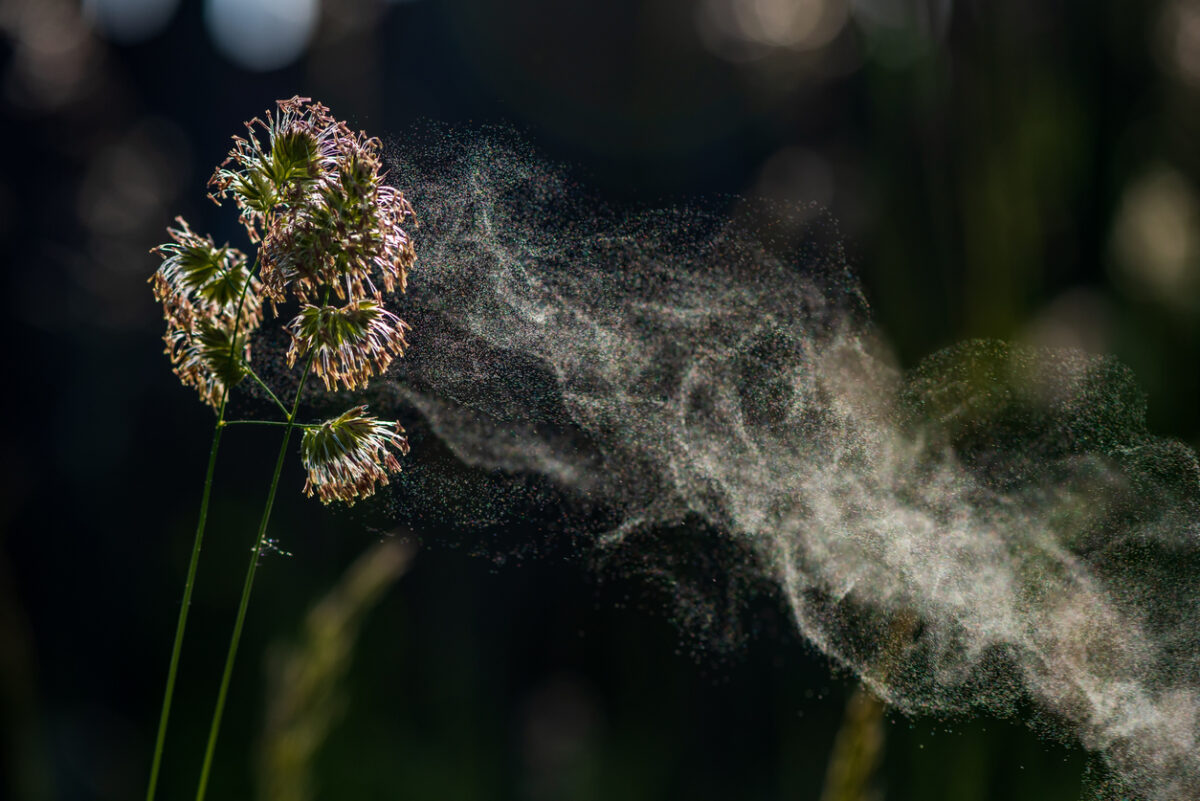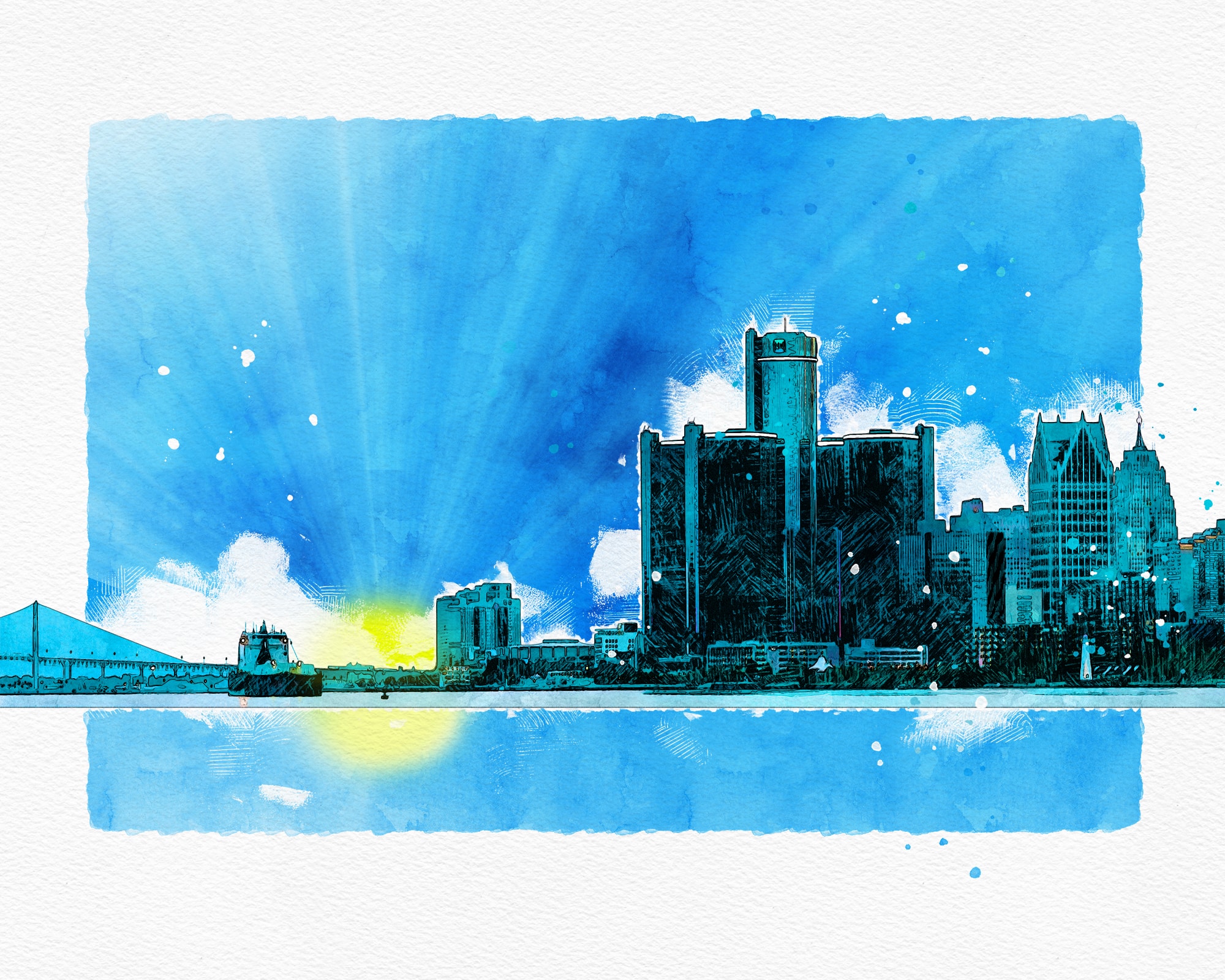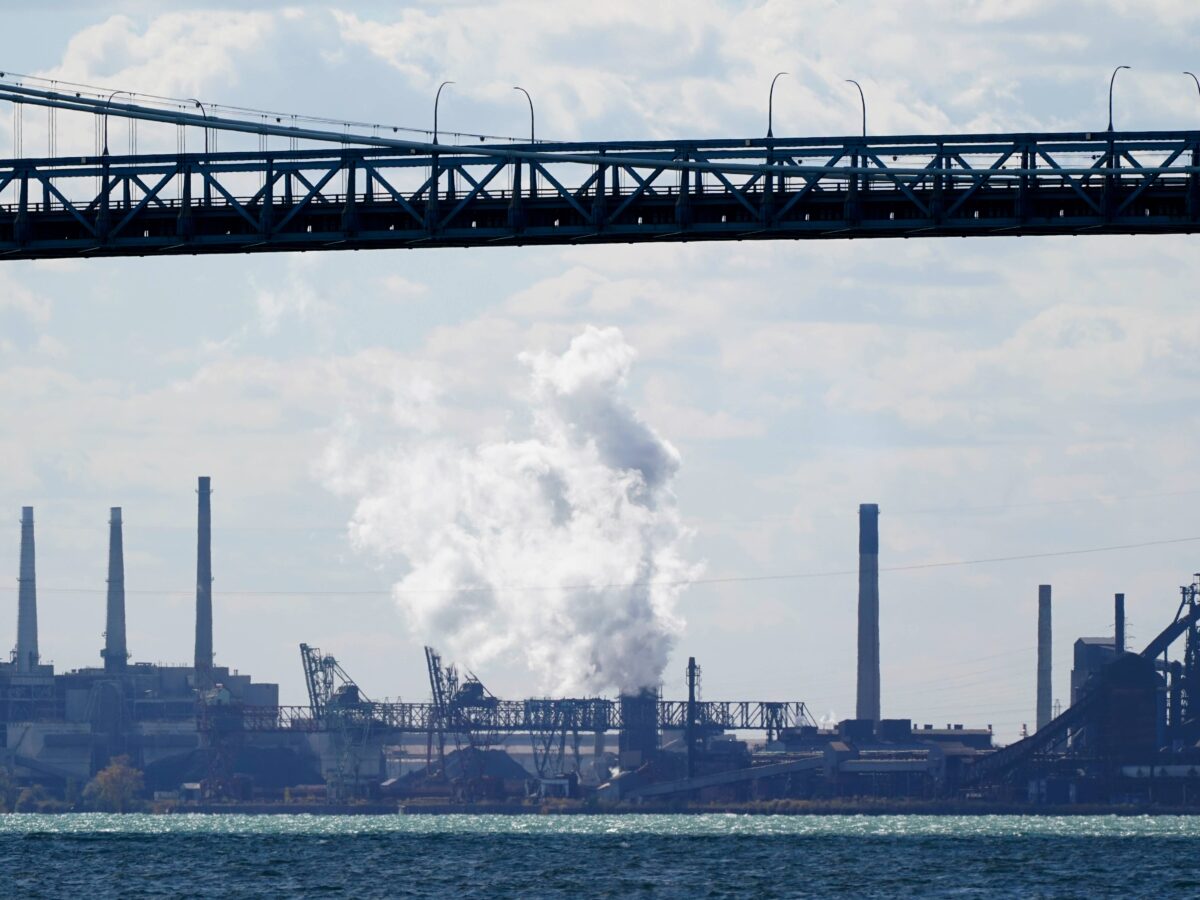Overview:
-Detroit residents are feeling the impact of climate change. The city's pollen season has grown by 31 days since 1970, exacerbating allergy symptoms.
-A University of Michigan doctoral student is working on creating an improved forecasting tool for pollen.
-Yingxiao Zhang's climate mapping has found that Michigan's cypress and oak trees are producing more pollen as temperatures and carbon dioxide levels rise.
Detroit pollen is on the rise.
Allergy specialist Rana Misiak has increasingly noticed a common refrain from her patients in recent years: “My allergies are getting worse.” Symptoms, such as runny noses, sneezing, and itchy eyes, they say, are intense and occurring earlier in the year.
Patients of all ages come to Misiak and say, “‘you know, this season is different than last season,’ or ‘the last few years have really been different than what I’d been accustomed to over my lifelong history of allergies,’” she told Planet Detroit. Misiak works as an allergist and immunologist at Henry Ford Health.
“Sometimes we can tie it to something like a different exposure in their environment, a new pet, a move to a different area of the country. But I think that there’s definitely a reason to back that up with what we’re seeing with the pollen.”
Detroit’s growing season, and by default, its allergy season, has grown by 31 days since 1970, according to a March report from Climate Central. As global surface temperatures have risen in the last several decades, the pollen season, which arrives between spring and fall, has started earlier. This means grass and plants have a longer time frame to grow and release the powdery grains.
Scientists also say that carbon dioxide emissions have contributed to a higher potency and count of pollen in the air.
Here’s what to know:
Detroit allergists are seeing worsening symptoms
Among Garen Wolff’s clients, more are reporting that their allergic conjunctivitis, or allergy of the eyes, has worsened year after year.
“April was a pretty bad month,” said Wolff, a Detroit-based allergist and immunologist. “I’ve had a lot of patients come in because their normal regimen for itchy eyes and watery eyes just is not as effective as it was prior.”
Pollen may not be the lone contributor to severe allergic reactions.
In Detroit, Wolff said, it’s hard to discount the impact airborne irritants can have on people already dealing with seasonal allergies.
“We’re the Motor City — so you have the cars and the trucks that are on the freeway,” she said, adding that emissions from petroleum refineries, as well as wildlife smoke, can exacerbate a person’s symptoms.
Henry Ford’s Misiak said allergists consider how irritants such as wildfire smoke, ozone, and “all those things that are in the air that can be affecting someone’s airways” can worsen allergy-like reactions or inflammation in the lungs.
“It is definitely something to think about when symptoms are either new or different and maybe patients are not responding to allergy medicines, or when we do an allergy test and find that actually no allergens were specifically found as triggers,” she said.
She said these factors are considered when patients’ symptoms are new or different, they fail to respond to medicines, or an allergy test finds no specific allergens as triggers.
She said allergists then consider what else in the air could provoke symptoms and solutions such as reducing exposure to inflammation triggers or medication to address them.
MORE REPORTING FROM PLANET DETROIT
EPA offers Clean Air Act exemptions from Trump, and one of metro Detroit’s top polluters applies
A new EPA policy under the Trump administration could let over 500 facilities nationwide sidestep pollution controls for two years, a move that critics say endangers millions of Americans.
Dirty air: Wayne County gets ‘F’ in 2024 State of the Air report
The State of the Air report from the American Lung Association says climate change is dramatically increasing the number of days with poor air quality nationwide.
Climate is adding to Detroit air quality problems: American Lung Association
Detroit’s failing air quality grade in the American Lung Association’s State of the Air Report highlights the impact of climate change and wildfire smoke, as over 77 million people nationwide face unhealthy PM 2.5 pollution spikes.
Detroit pollen is hard to track, but new tools are on the way
Things may only get worse for people living with seasonal allergies: a recent article from the Journal of Allergy and Clinical Immunology anticipates “an increase in incidence and prevalence of allergen sensitization and increased symptom burden” across the globe as long as climate change continues unfettered. In the United States, roughly one-quarter of adults and nearly one out of five children already experience seasonal allergies, according to the Asthma and Allergy Foundation of America.
Among some of the ways scientists are trying to address the issue is by improving the forecasting of pollen seasons. Yingxiao Zhang, a climate scientist and doctoral student at the University of Michigan, has spent the last several years collaborating with the National Oceanic and Atmospheric Administration to incorporate pollen into its national air quality forecast system.
“One of the biggest gaps in this field is that when we look at the pollen problem, it’s really hard to monitor the pollen in different regions, because currently we still largely rely on trained analysts to use microscopes to actually take these air particles back to the lab and count them one by one and that takes so much resources and time,” said Zhang.
Part of the ongoing challenge of forecasting pollen across the United States, Zhang notes in her research, is that there are limited observation stations. Some states, including Michigan, lack a site. Allergists Misiak and Wolff said they do not rely heavily on pollen trackers for their work, although they have patients who may use them.
“I don’t know that the current data tracking of the pollen is as specific yet as maybe we would like it to be,” Misiak said. “It’s just not as real time as maybe it will be in the future, where we can actually have that kind of predictive information. But that may be something that’s to come.”
Through her climate modeling, Zhang and her colleagues have mapped out how climate change has already affected the pollen season of various grasses and trees across the United States. In Michigan, for example, cypress and oak trees have increasingly produced more pollen as the temperatures and carbon dioxide emissions have risen.
Once their tool is complete, Zhang told Planet Detroit, it will ideally provide the public with an “hourly, nationwide pollen forecast,” capable of helping allergists and individuals better assess the risk of allergies throughout the pollen season.
What should you do if you suspect allergies?
Both Wolff and Misiak encourage those suffering from allergy-like symptoms to discuss them with their primary care physician.
Identifying one’s allergies is “empowering,” Misiak said.
“I don’t think that people need to wait until they’re really burdened by symptoms to come in. I think it’s definitely a good idea to come in sooner rather than later, as well as at any age.”
For Wolff, she’s made accessible education a part of her outreach efforts, using YouTube, Instagram, and TikTok to reach a broader audience.
“There’s also a lot of people who don’t know that they can be treated for their allergies, and people who come to me and say, ‘I just got used to it, and now I can breathe,’ because they had no idea,” Wolff said.”
When it comes to do’s and don’ts surrounding seasonal allergies, Misiak recommends these strategies:
- Close your windows so the pollen is not coming into the home.
- Shower and change your clothes after going outside to remove pollen exposure.
- Protect your eyes and hair with sunglasses and a hat.
“Sometimes those simple things can make a difference,” Misiak said.
In terms of over-the-counter medication, Wolff typically recommends nasal sprays, such as Flonase and Azelastine, to her patients, depending on the frequency and severity of their symptoms, as well as eye drops.
Other medicines, such as antihistamines, can “only do so much,” Wolff added, particularly in cases where patients may be experiencing sneezing and running noses due to airborne irritants and not from seasonal allergies. In those cases, she encourages people reacting to air pollution or high humidity to buy an air purifier or a nasal saline spray.
When is pollen the worst?
Generally speaking, pollen allergies can be broken up across three major categories: trees, grasses, and weeds. Between the spring and summer, pollen from trees and grass is common, while in the fall the most common allergies are mold, and pollen from ragweed and other plants.
Wolff has observed more patients experience allergy symptoms earlier in the season and for longer durations.
“Asthma Peak Week is the third week of September, because ragweed is in the air. But now ragweed is staying around longer,” Wolff said, adding that hospitals are reporting asthma attack peaks as late as October.
- February – April: Trees (some regions start as early as December or January)
- April – early June: Grasses
- August − first hard frost: Weeds
Other allergens, such as mold, can be found year-round both indoors and outdoors.





